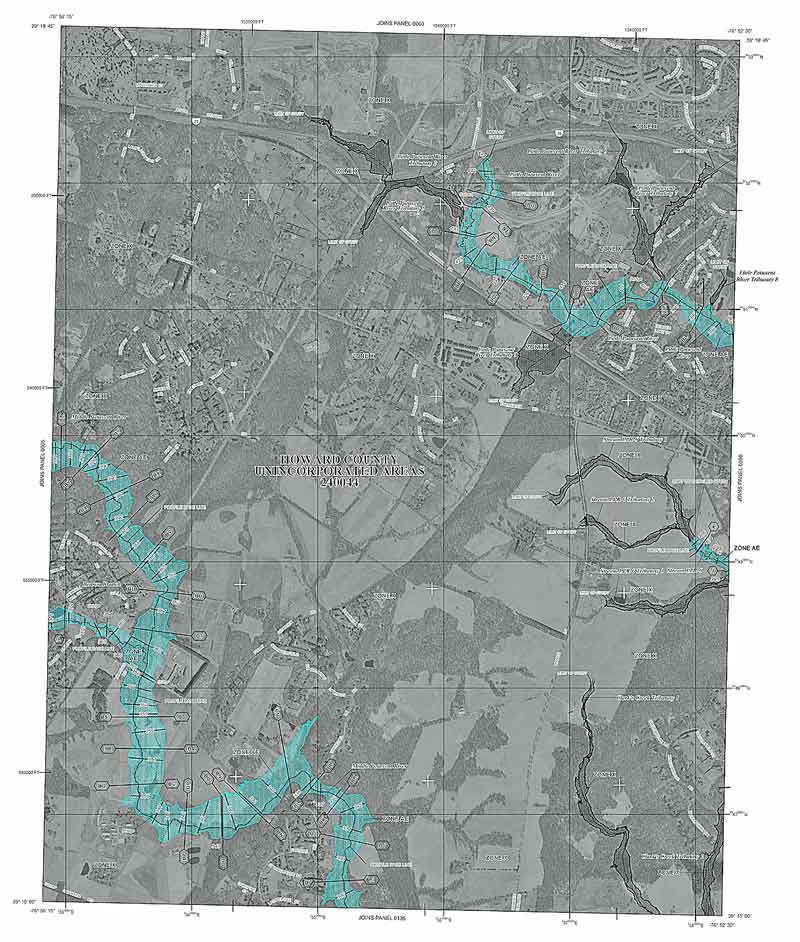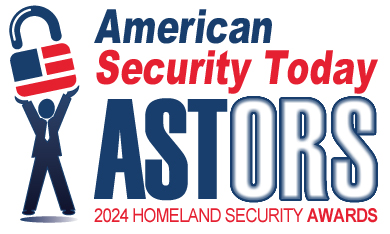
The Department of Homeland Security (DHS) Science and Technology Directorate (S&T) is partnering with local communities to improve resilience to flood disasters.
S&T’s latest community partnership is with Howard County, Maryland and the National Weather Service (NWS).
In July 2016, Ellicott City, Maryland experienced a devastating flood when a severe thunderstorm dumped more than six inches of rain in only two hours.
UPDATE: This was just posted on Facebook by SOMDWXNEWS. 2ND VIDEO: Ellicott City, MD Flash Flooding on Main Street. Flood Emergency declared. This is becoming a dangerous and catastrophic situation according to the National Weather Service. Multiple water rescues in progress. May 27, 2018. WARNING: Strong Language.
(Courtesy of SOMDWXNEWS and Facebook. Posted on May 27, 2018.)
(See a group seeking shelter from last years Ellicott City floods, as they form a human chain to rescue a stranded woman. Courtesy of David Dempster and The Baltimore Sun. Posted on Aug 2, 2016)
S&T’s Flood Apex Program, Winner of a prestigious 2017 ‘ASTORS’ Excellence in Homeland Security Award, will be working to support the community’s flood action plan by deploying 48 cutting-edge flood sensors for field testing at 16 different locations throughout the Tiber-Hudson watershed starting in late June 2018.
Data collected from these sensors will be correlated to weather events. By better understanding how these events impact the watershed, efforts can be made to strengthen disaster preparedness and community resilience.
“Through this new partnership with DHS and NWS, we are field-testing these sensors to collect valuable data that will help us close this informational gap and contribute to the development of a better flood warning alert system for the residents, businesses and property owners in the watershed,” said Howard County Executive Allan H. Kittleman.
(Hear More from Howard County Executive Allan H. Kittleman. Courtesy of Howard County Government and YouTube. Posted on May 21, 2018)
These new low-cost flood sensors are being developed through S&T’s Small Business Innovation Research program with three private sector partners:
-
Evigia Systems Inc. of Ann Arbor, Michigan
-
Progeny Systems Corporation of Manassas, Virginia
-
Physical Optics Corporation (POC) of Torrance, California

“Howard County is an important community partner and pilot location for testing new technologies such as low cost flood sensors,” explained Dr. David Alexander, DHS S&T Flood Apex Program Director.
“It affords us an opportunity to improve local flood response and strengthen community resilience applying new technologies.”
“The lessons learned from the Ellicott City technology pilot will be invaluable to S&T’s research and development role in support of FEMA allowing us to better protect communities nationwide.”
In addition to Howard County, Maryland, S&T is working with several other communities around the country to assist with their own unique flood potential circumstances.
S&T Flood Apex has begun pilots with Charlotte-Mecklenburg (North Carolina) Storm Water Services and the Kentucky Department of Water to deploy and test low-cost flood sensors.
“Each community has its own unique flooding challenges and what we learn from each of these unique environments will help us in other communities around the nation.”
The Ellicott City flood sensors will stay in place for six to 12 months and the information collected from these sensors will be used to help the Federal Emergency Management Agency (FEMA) in its efforts to protect communities nationwide from flood risk.
S&T First Responders Group Flood Apex program

The DHS S&T First Responders Group Flood Apex program was created at the request of the Federal Emergency Management Agency (FEMA), to bring new technologies and new thinking to how we cope our #1 natural disaster.
Each year, floods kill more people and cause more economic damage than earthquakes, tornados, wildfires or severe storms.
- About nine million people live in flood hazard areas, and half of them are uninsured or underinsured.
- Over 200 people are killed in flash floods each year and another 80 by other types of floods.
- Flood damages average $7.9 million per year and are increasing at a rate of almost 2% annually.
- As more people and more development move into flood risk areas, the numbers are rising.
Flash flooding typically occurs within the first six hours of a heavy rainstorm or after a dam or levee breaks causing a sudden release of water, leaving community leaders and emergency managers with very little time to evaluate.
This limited time before an immediate flood threat is why communities must train and prepare prior to the storms and flooding, and why DHS S&T is developing a variety of tools responders could use to enhance community resilience.
(S&T’s Flood Apex program addresses the threat of destructive flooding on several levels and draws on the experience of vulnerable communities such as Austin and New Orleans to guide research and experimentation. Courtesy of DHS Science and Technology Directorate and YouTube. Posted on May 30, 2017)
The goals of the Flood apex Program, are as follows:
- To reduce fatalities and property losses from future flood events
- Increase community resilience to disruptions caused by flooding, and
- Develop better investment strategies to prepare for, respond to and recover from and mitigate against flood hazards
New Flood Sensors and Alerting
Emergency planners have traditionally relied on custom installed “stream gauges” to measure the height of water as it flows, which are expensive, permanent installations costing thousands of dollars.
Today’s advanced manufacturing tools can produce lightweight, affordable, internet-connected sensors IoT tools to improve flood detection, monitoring and local flood safety programs, before they become bigger risks to public safety.
(Learn More, courtesy of The Flood Network and YouTube. Posted on Oct 27, 2015.)
Smarter Remote Sensing and Situational Awareness
Flood extents and pathways are critically dependent on weather conditions, terrain contours and surface permeability.
These factors are hard to map precisely, and they change year-to-year as development (i.e., paved-over land) spreads.

Traditional surveying is costly and time-consuming, and produces an incomplete patchwork of risk information.
Two of today’s technologies—Light Detection and Ranging (LiDAR) and Synthetic Aperture Radar (SAR)—offer tremendous opportunities to drive down hazard mapping costs, increase accuracy and speed-up production.
- LiDAR, is a surveying method that measures distance to a target by illuminating that target with a pulsed laser light, and measuring the reflected pulses with a sensor.
- SAR, is a coherent mostly airborne or spaceborne sidelooking radar system which utilizes the flight path of the platform to simulate an extremely large antenna or aperture electronically, and that generates high-resolution remote sensing imagery.
Flood Apex is also using historical satellite imagery to detect areas outside designated high risk areas that have experienced flooding in the past.
These new tools will make flood risk assessments more accurate and better prepare emergency managers.
(Learn More. We make our cities more resilient by looking how we responded to the last disaster. S&T looks at what happened in the past, and we want to create plans to strengthen our critical infrastructure 20 years into the future! Courtesy of DHS Science and Technology Directorate and YouTube. Posted on Nov 2, 2015)
Furthermore, DHS S&T can make our cities more resilient by looking how we responded to the last disaster.
S&T looks at what happened in the past, and we want to create plans to strengthen our critical infrastructure 20 years into the future!
High-Performance Computing and Artificial Intelligence
Strengthening community resilience depends on more effective understanding of flood risk.
 Expanding flood insurance and improving flood mitigation investment require knowing where community assets are, their elevation, who owns them and how much they are worth.
Expanding flood insurance and improving flood mitigation investment require knowing where community assets are, their elevation, who owns them and how much they are worth.
Such an inventory was impossible until now, and emerging technologies are providing breakthroughs.
Flood Apex is applying facial recognition algorithms to detect physical structures from satellite images.
These algorithms, accelerated by supercomputers and constantly improved by machine learning techniques, are on schedule to create the first complete structures’ inventory of the entire U.S. within the next two years.
Alerts and Emergency Warning Systems
Also, the Flood Apex Program is developing new and improved alerts and warnings systems, to alert public and first responders in the field responding – to emergencies about the risks they may face sooner.
The FRG is honing in on how to best serve first responders and others who have specific data and information needs related to flood preparedness, mitigation, response, and recovery.

“The goals of the Flood Apex Program are to save lives, decrease uninsured losses and reduce property damage,” explained FRG Director Daniel Cotter.
“FRG hopes to achieve this by increasing access to community, regional, and national data and information sources; analytical tools; and other resources that may help everyone make better flood resilience decisions.”
“We’re working directly with partners who have experience in all aspects of mitigating and responding to flood events,” Cotter continued.
“We want to learn from those who have dedicated their careers to developing innovative approaches and solutions, and for community practitioners tasked with implementing local solutions.”
The FRG is working with FEMA and the National Weather Service to help communities mitigate harm and bolster resilience.
While FRG cannot control the weather, it can develop the tools needed by responders on the front lines to help stand up to the challenges floods present, including evacuation of community residents, providing support services, and restoring infrastructure.
Floods cannot be fully defeated, but they can be managed far better with today’s rapidly improving tools.
DHS S&T First Responders Group in 2017 ‘ASTORS’ Homeland Security Awards Program
 The U.S. Department of Homeland Security Science (DHS) and Technology Directorate (S&T) was recognized with four ‘ASTORS’ ‘Excellence in Homeland Security’ Platinum Awards by American Security Today (AST), at the ISC East Conference in New York City to honor organizations that are actively addressing today’s evolving Homeland Security challenges in innovative ways.
The U.S. Department of Homeland Security Science (DHS) and Technology Directorate (S&T) was recognized with four ‘ASTORS’ ‘Excellence in Homeland Security’ Platinum Awards by American Security Today (AST), at the ISC East Conference in New York City to honor organizations that are actively addressing today’s evolving Homeland Security challenges in innovative ways.
The innovative solutions being implemented to meet those threats has led to tremendous growth in the field of Homeland Security, and to this awards program for recognition of the key contributors to our nation’s security.
-
Department of Homeland Security (DHS) Science and Technology Directorate (S&T)
- Enhanced Dynamic Geo-Social Environ (EDGE) Virtual Online Training for First Responders Open at No Cost to All U.S. First Responders Agencies, Across Disciplines for Coordinated Response to Critical Incidents
- Excellence in Homeland Security
-
Department of Homeland Security (DHS) Science and Technology Directorate (S&T)
- Resilient Tunnel Plug (RTP) to Strengthen Mass Transportation Critical Infrastructure from Disruptive Flood Events
- Excellence in Homeland Security
-
Department of Homeland Security (DHS) Science and Technology Directorate (S&T) First Responders Group (FRG)
- Flood Apex Program, Applying New & Emerging Technologies to Improve Community Resilience from Flood Disasters, Reduce Fatalities and Property Loss
- Excellence in Homeland Security
-
Department of Homeland Security (DHS) Science and Technology Directorate (S&T) Homeland Security Advanced Research Projects (HSARPA)
- Surface Transportation Explosives Threat Detection (STETD) on Developing the Capacity to Detect Potential Threat Items Throughout Rail and Subway Systems Without Alerting the Subject or Negatively Impacting the Speed of Travel
- Excellence in Homeland Security
 The 2017 ‘ASTORS’ Homeland Security Awards Presentation Luncheon
The 2017 ‘ASTORS’ Homeland Security Awards Presentation Luncheon
The annual ‘ASTORS’ Homeland Security Awards Program, recognize the most distinguished vendors of Physical, IT, Port Security, Law Enforcement, Border Security, First Responders, (Fire, EMT, Military, Support Services Vets, SBA, Medical Tech) as well as the Federal, State, County and Municipal Government Agencies – to acknowledge their outstanding efforts to ‘Keep our Nation Secure, One City at a Time.’
To Learn More about the ‘ASTORS’ Homeland Security Awards Program, see 2017 ‘ASTORS’ Homeland Security Award Winners Honored at ISC East.
Over 100 distinguished guests from National, State and Local Governments, and Industry Leading Corporate Executives from companies allied to Government, gathered from across North America and the Middle East to be honored from disciplines across the Security Industry in their respective fields which included:
- The Department of Homeland Security
- The Department of Justice
- The Security Exchange Commission
- State and Municipal Law Enforcement Agencies
- Leaders in Private Security




















